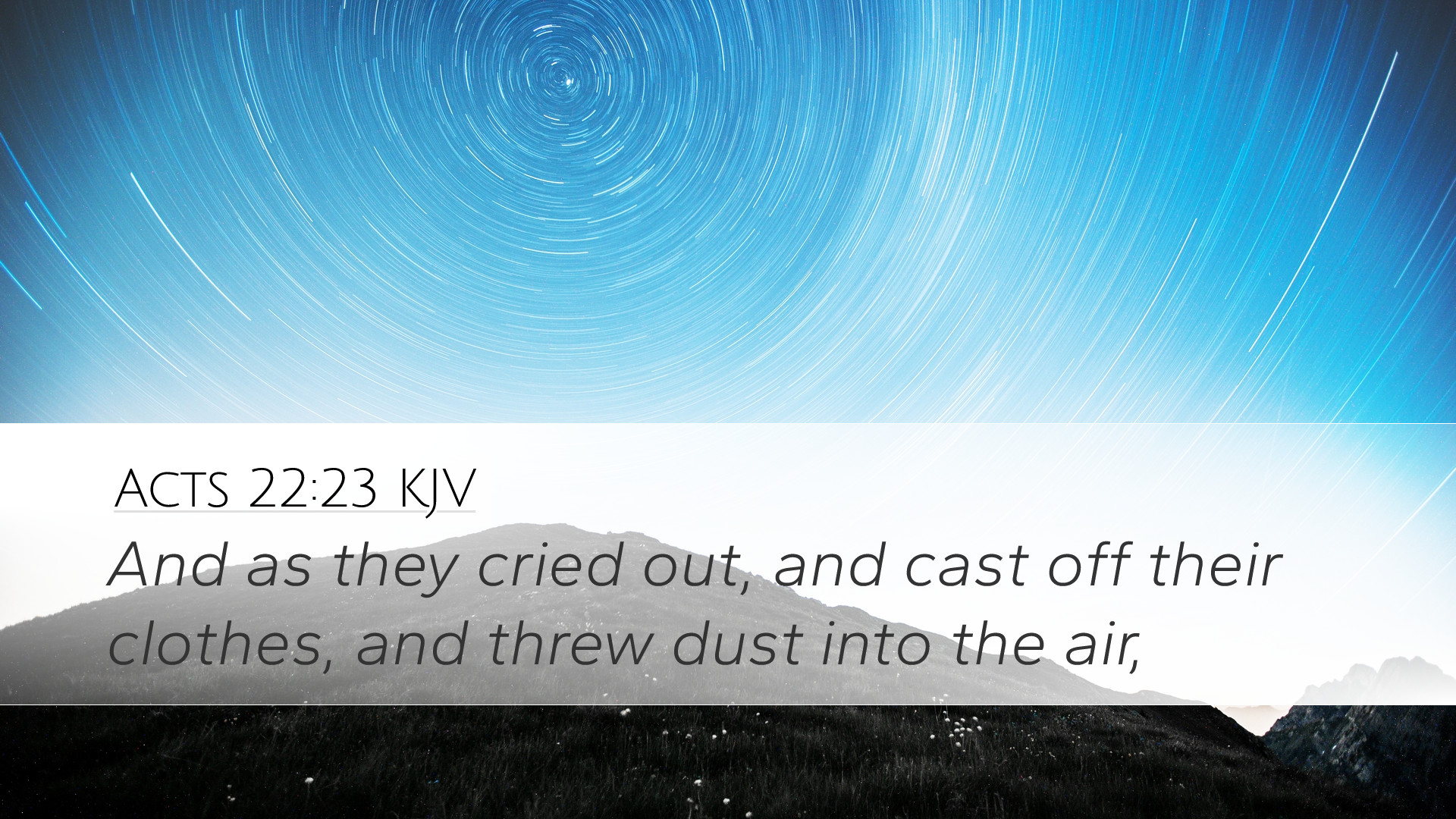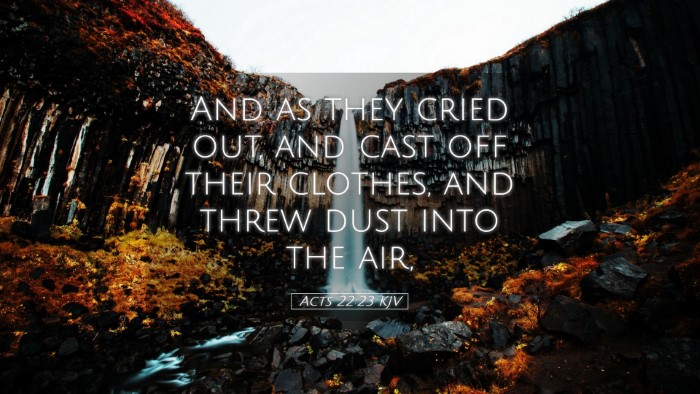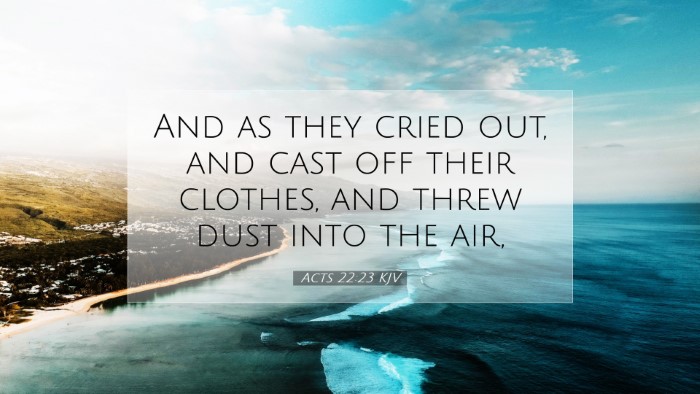Commentary on Acts 22:23
Verse Text: "And as they cried out, and cast off their clothes, and threw dust into the air,"
Introduction
The event captured in Acts 22:23 is a pivotal moment in the apostolic narrative that encapsulates the themes of persecution, misunderstanding, and divine providence. In this commentary, we synthesize insights from various public domain commentaries to offer a comprehensive exploration of the verse.
Contextual Background
Historical Context: The apostle Paul had been arrested in Jerusalem, an act that ignited significant emotional turmoil among the Jewish crowd. His defense of the Gospel, particularly his testimony of conversion, provoked a powerful reaction, as he stood before a people steeped in tradition and zeal for the Law.
Cultural Context: The Jewish mob's ensuing uproar highlights the cultural tension that often accompanies religious discussions. The act of throwing dust and removing garments can be traced back to ancient Jewish customs of expressing mourning and outrage (see Matthew Henry). Thus, such actions served not only as emotional expressions but also as communal indicators of their vehement rejection of Paul’s doctrine.
Analysis of the Verse
The verse describes a scene wherein the crowd cries out violently, casting off their clothing and throwing dust into the air, an eruption of anger and shame towards Paul. This emotive response carries several implications worth exploring:
- Outburst of Emotion: The intense reaction displayed by the people points to their deep frustration and anger towards Paul's assertions (see Albert Barnes). Their physical actions—casting off clothing and throwing dust—demonstrate an unrestrained passion that reflects their commitment to the Law and tradition.
- Symbolic Actions: The act of throwing dust is coded in various historical contexts as a sign of reproach and desecration. It illustrates the indictment against Paul, suggesting that he has sullied the sanctity of their beliefs (according to Adam Clarke).
- Spiritual Blindness: This tumultuous reaction serves as a testimony to the spiritual blindness of the crowd, unable to see the truth of the Gospel that Paul was preaching, indicative of a broader theme in the Book of Acts regarding the resistance faced by early Christians (as elaborated by Matthew Henry).
Theological Implications
The actions of the crowd in this passage provide insight into several critical theological concepts:
- Persecution of the Righteous: Paul’s experience is emblematic of the broader reality of persecution faced by believers. Their hostility towards him underscores the ongoing conflict between worldly systems and spiritual truths.
- Divine Sovereignty: Despite the chaos and aggression from the crowd, God’s plan remains intact. Paul’s presence in Jerusalem was ordained for the purpose of spreading the Gospel to the Gentiles, and these events occur within the framework of His divine will (referenced in Albert Barnes).
- Human Response to Divine Truth: The extreme response to the message of salvation indicates the dichotomy in human reception of divine truth—acceptance or rejection. Paul’s ministry continues to provoke varied responses, foreshadowing the ongoing challenges faced by believers in proclaiming the Gospel (as noted by Adam Clarke).
Application for Believers
This passage invites reflection on several fronts for modern-day believers, pastors, and theologians:
- Emotional Authenticity: The raw emotion exhibited by the crowd can serve as an admonition to contemporary believers about the importance of emotional authenticity in their own faith journeys.
- Resilience in Persecution: Paul's steadfastness amidst conflict encourages believers to remain resilient in the face of opposition, emphasizing the call to faithfully uphold the truth of the Gospel, regardless of societal backlash.
- Understanding Cultural Contexts: The necessity of understanding cultural and historical contexts when engaging with Scripture is vital. The actions of the crowd reflect their cultural norms, challenging modern Christians to navigate their own cultural landscapes in sharing and defending their faith (in line with insights from Matthew Henry).
Conclusion
Acts 22:23 serves as a poignant reminder of the volatile nature of revealing divine truth within a world that may not accept it. The chaotic response of the crowd reveals deep-seated convictions that stand in opposition to the Gospel. As believers today navigate their own spiritual journeys, this passage challenges them to take a stand for their faith, to understand the roots of their disbelief, and to confront opposition with grace and truth.


